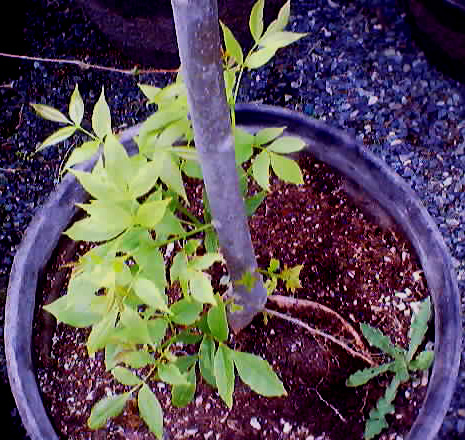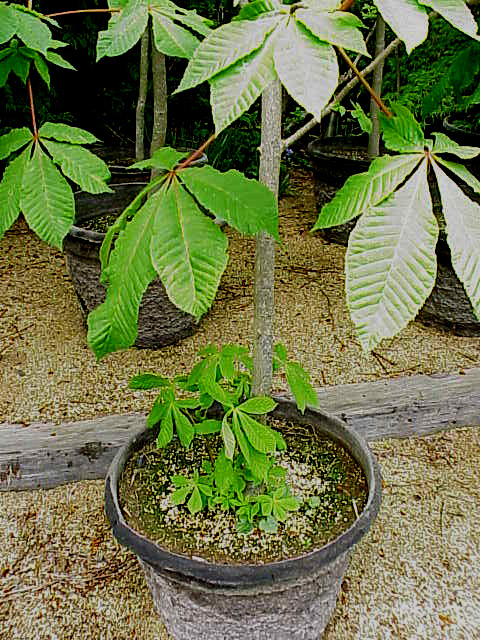By now you’re probably ready to stand up, brush off your pants, and stretch your back after crawling around looking for surface roots and root crowns. Not so fast! There’s one more thing to look for – and to avoid.
Take a look at these two photos:


You can easily see the suckers at the base of these trees. Whether or not they are actually suckers (coming from the roots) or watersprouts (coming from the base of the trunk) doesn’t matter. Their presence in single trunked species warns of problems underground. You’ve probably seen landscape trees respond to crown stress by suckering. In this situation, my diagnosis is that the roots are so stressed (buried too deeply, structurally malformed, etc.) that they are unable to provide enough water to the crown. Thus, the plant responds by creating a shorter crown (the suckers) which is easier to keep supplied with water.
In both of the above cases, these were the only individuals of their species in the nursery that were suckering. That makes it easy to avoid purchasing them and their stressed root systems.
This is not such a problem with species that tend to form thickets, like our native vine maple (Acer circinatum) below:

Bottom line: know the natural habit of your trees and shrubs before you buy them. If they are single trunked species, don’t be a sucker – avoid suckers!